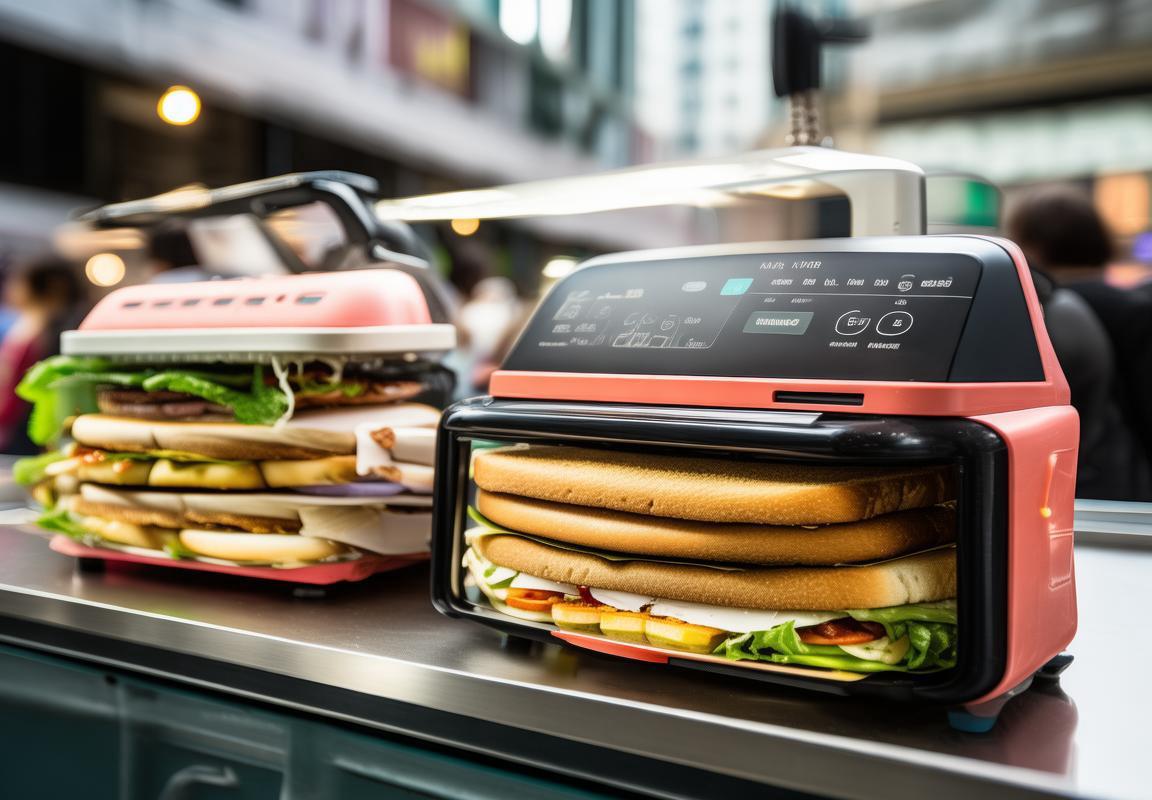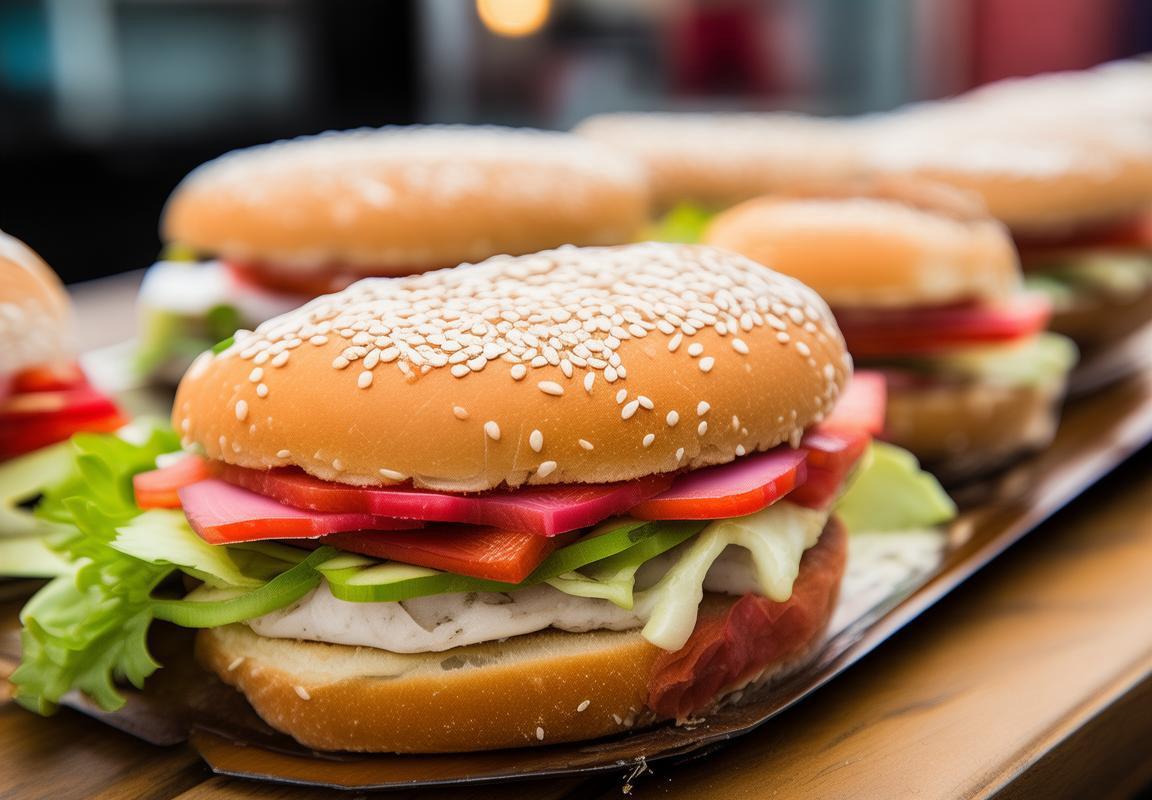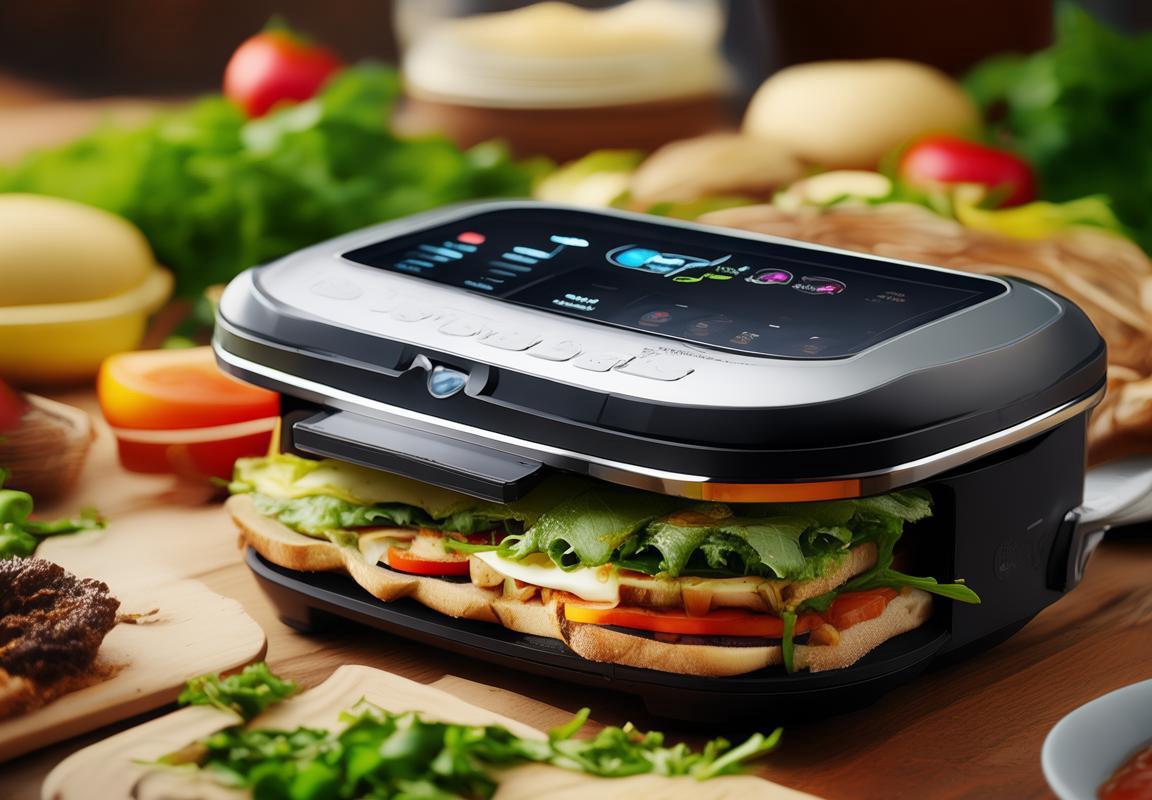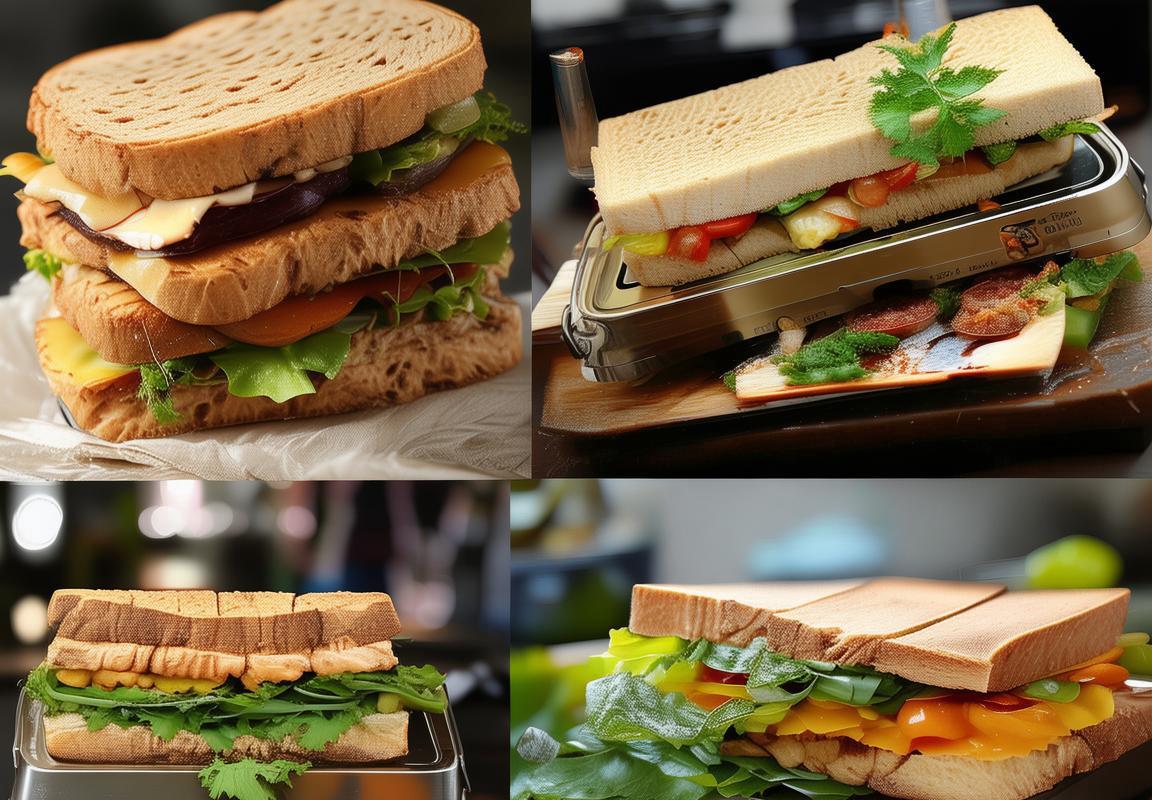As the world continues to evolve, the dynamics of various industries, including the sandwich maker market, are subject to constant shifts and changes. With a particular focus on the FOB Shanghai sandwich maker market, this discussion aims to delve into the intricacies of international trade, the impact of shipping costs, and the diverse consumer demands that shape the landscape. By examining the challenges and opportunities that arise from exporting sandwich makers from Shanghai, we can better understand the strategies that have led to success for those who have navigated the global market effectively.
Introduction to FOB Shanghai Sandwich Maker
Navigating the international market for sandwich makers, understanding the Free On Board (FOB) pricing from Shanghai is crucial for manufacturers and exporters. FOB Shanghai refers to the shipping point where the seller delivers the goods to the buyer, and the responsibility for shipping and insurance transfers to the buyer at that point. This pricing structure significantly impacts the cost and logistics of exporting sandwich makers, making it a vital aspect to grasp.
The FOB Shanghai model is particularly relevant for the sandwich maker industry due to the high demand for such appliances in European and American markets. With a diverse range of consumers seeking efficient and convenient kitchen solutions, the exportation of sandwich makers from Shanghai has seen a steady rise. This section will delve into the intricacies of FOB Shanghai for sandwich makers, examining its implications on pricing, logistics, and market dynamics.
In the context of FOB Shanghai, the seller’s responsibility ends once the goods are loaded onto the carrier. This means that all costs and risks associated with shipping the sandwich makers to the buyer’s designated location are the buyer’s responsibility. This shift in liability is a critical factor to consider when negotiating prices and preparing for exportation.
The cost of shipping a sandwich maker from Shanghai using the FOB Shanghai term includes not only the actual transportation fees but also other expenses such as customs clearance, insurance, and potential storage costs. These additional costs can vary significantly depending on the destination and the specific requirements of the buyer.
Understanding the market dynamics is essential for those involved in exporting sandwich makers from Shanghai. The global sandwich maker market is influenced by a variety of factors, including consumer preferences, technological advancements, and economic trends. For instance, the rise of the health-conscious consumer has led to an increased demand for healthier sandwich options, which in turn affects the types of sandwich makers that are popular in different regions.
When it comes to pricing, the FOB Shanghai model provides a clear basis for determining the cost of exporting sandwich makers. It ensures that both parties are aware of the price at which the goods are being sold, making it easier to establish fair trade agreements. However, it’s important to note that the FOB price does not include any costs incurred after the goods have been shipped, such as taxes, duties, or delivery fees.
The logistics of exporting sandwich makers from Shanghai can be complex. Manufacturers must consider the packaging of the appliances to ensure they are protected during transit. Additionally, compliance with international shipping regulations and standards is crucial to avoid delays and additional costs.
In recent years, there has been a growing trend of e-commerce platforms facilitating the export of sandwich makers. This has opened up new opportunities for small and medium-sized enterprises (SMEs) to enter international markets. The FOB Shanghai model is particularly beneficial for SMEs as it allows them to offer competitive pricing while still maintaining a manageable level of risk.
For those looking to export sandwich makers from Shanghai, it’s important to stay informed about the latest trends in the industry. This includes keeping an eye on emerging markets, understanding consumer behavior, and being aware of any regulatory changes that could affect the export process.
One of the key advantages of using the FOB Shanghai model is that it provides a level of flexibility for both buyers and sellers. Buyers can choose from a variety of shipping options, from standard to expedited, depending on their needs and budget. Similarly, sellers can offer a range of services to accommodate different customer preferences.
Another aspect to consider is the environmental impact of shipping sandwich makers from Shanghai. With growing concerns about climate change and sustainability, manufacturers and exporters are increasingly looking for greener shipping solutions. This could include using more energy-efficient shipping methods or exploring options for carbon offsetting.
In conclusion, the FOB Shanghai model is a critical component of the sandwich maker export process. It provides a clear framework for pricing and logistics, while also offering flexibility and a level of risk management. As the global sandwich maker market continues to evolve, staying informed about FOB Shanghai and its implications is essential for those looking to succeed in international trade.

Understanding FOB Shanghai
FOB Shanghai, or Free On Board Shanghai, is a crucial term in international trade that directly impacts the pricing and logistics of goods, particularly for those being exported from Shanghai, China. This term is deeply intertwined with the global supply chain and understanding it is essential for anyone involved in the export or import of goods.
In the context of FOB Shanghai, the seller is responsible for the goods up until the point they are loaded onto the carrier at the port of Shanghai. This means that all costs and risks associated with the product are borne by the seller until the goods reach the buyer’s designated location. This distinction is vital because it shifts the financial and legal responsibilities at a specific moment in the shipping process.
The FOB Shanghai pricing model includes the cost of the goods and the transportation fee to bring them to the port. However, it does not cover the costs that the buyer will incur once the goods are aboard the ship, such as insurance, customs duties, and freight from the port of destination to the buyer’s final location. This clear demarcation of costs and responsibilities is a cornerstone of international trade and helps to establish a fair and transparent deal between buyers and sellers.
When considering FOB Shanghai, it’s important to note that the term “Shanghai” refers specifically to the Port of Shanghai, one of the largest and busiest ports in the world. This port’s strategic location on the East China Sea makes it a major gateway for global trade, particularly with Europe and the Americas. As such, the FOB Shanghai price can vary significantly depending on the distance and logistics involved in getting the goods to their final destination.
The transportation costs associated with FOB Shanghai can be broken down into several components. The first is the cost of shipping the goods from the factory to the port, which includes transportation, handling, and potentially customs clearance. The second is the actual shipping fee, which can vary widely based on the mode of transport (e.g., container shipping, air freight, or ocean freight) and the weight and volume of the goods.
Once the goods are at the port, the seller’s responsibility ends, and the buyer takes over. This means that the buyer is responsible for arranging insurance for the goods during transit, as well as for any additional costs that may arise, such as import duties and taxes in the destination country. This transition point is often referred to as the “ship’s rail” or the “quay edge,” which is where the seller’s liability ceases and the buyer’s begins.
The FOB Shanghai price also reflects the current market conditions, including the cost of raw materials, labor, and any changes in shipping rates. For example, if there is a surge in demand for certain types of sandwich makers, the price of these goods may increase, which would be reflected in the FOB Shanghai price.
Furthermore, the FOB Shanghai term can have different interpretations depending on the Incoterms (International Commercial Terms) being used. Incoterms are a set of standard terms published by the International Chamber of Commerce (ICC) that define the responsibilities of the buyer and seller in international transactions. For instance, while FOB Shanghai under the Incoterms 2010 might mean that the seller is responsible for the goods until they are loaded onto the ship, the same term under Incoterms 2020 could have a different interpretation.
In conclusion, FOB Shanghai is a term that encapsulates the financial and legal obligations of both buyers and sellers in the international trade of goods. It is a complex concept that involves not only the cost of the goods and transportation to the port but also the subsequent costs and risks that the buyer will face. Understanding the nuances of FOB Shanghai is crucial for anyone looking to engage in international trade, as it can have a significant impact on the overall cost and success of a transaction.

Market Dynamics in the Sandwich Maker Industry
The sandwich maker industry has seen a surge in popularity, reflecting a shift in consumer preferences towards convenience and variety in food choices. This dynamic market is influenced by several factors, including technological advancements, changing demographics, and global culinary trends.
One significant trend is the integration of smart technology into sandwich makers. Modern appliances now come with features like adjustable heat settings, non-stick surfaces, and even Bluetooth connectivity for remote control. This technological evolution has expanded the market, attracting tech-savvy consumers who value innovation and ease of use.
Demographic changes, particularly the rise of the millennial generation, have also played a pivotal role. Millennials are known for their preference for on-the-go lifestyles and health-conscious eating habits. As a result, there’s a growing demand for sandwich makers that can produce quick, nutritious meals, contributing to the industry’s upward trajectory.
Culinary trends, both international and local, are shaping the sandwich maker market. The popularity of gourmet sandwiches, which often feature unique ingredients and flavors, has spurred the development of specialized sandwich makers that can handle a variety of fillings. Additionally, the rise of vegan and gluten-free diets has led to the creation of sandwich makers that cater to these dietary needs.
Globalization has had a profound impact on the sandwich maker industry. As people travel more frequently, they bring back culinary influences from different countries, which in turn inspire new sandwich maker designs. For instance, the influx of Asian flavors has prompted the development of sandwich makers that can handle rice and noodle-based fillings, broadening the market’s appeal.
The competitive landscape is characterized by a mix of large corporations and niche players. Established brands often have a strong presence due to their brand recognition and distribution networks. However, niche players are gaining traction by offering unique features, superior quality, or specialized products that cater to specific market segments.
Regulatory changes can also be a driving force in the industry. For example, stricter food safety regulations have led to an increased demand for sandwich makers that are easy to clean and maintain, reducing the risk of cross-contamination. This has prompted manufacturers to invest in research and development to create new products that meet these standards.
E-commerce has revolutionized the way sandwich makers are sold. Online marketplaces have made it easier for consumers to discover and purchase a wide range of sandwich makers, often at competitive prices. This has opened up new opportunities for manufacturers to reach a global audience without the need for extensive physical distribution networks.
The sustainability aspect is another factor influencing the market dynamics. As environmental concerns grow, there’s a trend towards using eco-friendly materials and energy-efficient designs in sandwich makers. This not only appeals to environmentally conscious consumers but also helps manufacturers to comply with global sustainability standards.
Innovation in design and functionality continues to drive the sandwich maker industry. Manufacturers are constantly seeking to improve user experience by incorporating features like programmable settings, digital displays, and even built-in timers. These advancements are not only making sandwich makers more versatile but also more appealing to a broader consumer base.
Lastly, the sandwich maker industry is influenced by the broader foodservice sector. The rise of food trucks, pop-up restaurants, and communal dining spaces has created a demand for portable and versatile sandwich makers that can be used in various settings. This has spurred the development of compact, lightweight models that are easy to transport and set up.
In summary, the sandwich maker industry is a dynamic and evolving market, driven by technological advancements, changing consumer preferences, and global culinary trends. As these factors continue to shape the industry, manufacturers must stay agile and innovative to meet the demands of a diverse and ever-changing market.

Cost Analysis: FOB Shanghai vs. Other Ports
In the intricate web of global trade, the cost of shipping products from one port to another plays a pivotal role in determining the final price for consumers. When it comes to sandwich makers, a popular item in the kitchen appliance market, understanding the cost differences between shipping from FOB Shanghai and other ports is crucial. Let’s delve into the various factors that influence these costs and how they compare.
The distance factor significantly impacts shipping costs. Shanghai, being a coastal city in China, benefits from its proximity to the sea, allowing for efficient sea transportation. However, the distance from Shanghai to various international destinations varies. For instance, shipping to Europe might be shorter than to North America, which can affect the overall cost.
Freight rates fluctuate based on demand and supply dynamics. During peak seasons, such as holidays or trade shows, there’s often a surge in shipping activity. This increased demand can lead to higher freight rates. In contrast, shipping during off-peak seasons may offer more competitive rates. Comparing FOB Shanghai rates with those from other ports, one must consider the seasonal variations and how they might influence the final cost.
The complexity of logistics cannot be overstated. Each shipping route has its unique set of logistical challenges, including customs regulations, documentation, and handling procedures. While Shanghai’s well-established infrastructure and streamlined processes might offer some cost advantages, other ports may have more lenient customs policies or simpler documentation requirements, potentially lowering costs.
Insurance premiums also play a role in the total shipping cost. The value of the goods being shipped, the risk of damage or loss, and the specific insurance coverage chosen all contribute to the premium. Generally, the longer the shipping distance and the more complex the route, the higher the insurance cost. This is a factor to consider when comparing FOB Shanghai with other ports.
The availability and quality of shipping services can vary greatly between ports. For instance, some ports might offer more direct shipping routes, which can be faster and more cost-effective. Ports with a reputation for efficiency and reliability can attract lower freight rates due to the demand for their services. When comparing FOB Shanghai with other ports, it’s essential to look at the reputation and reliability of the shipping services available.
The cost of labor and infrastructure at each port can also affect shipping expenses. Ports with advanced facilities and a skilled workforce can handle goods more efficiently, potentially reducing costs. Shanghai, with its modern port facilities and skilled labor force, might offer some cost savings compared to ports with less developed infrastructure.
Customs duties and taxes are another significant cost consideration. These vary depending on the country of destination and the nature of the goods being shipped. While FOB Shanghai might offer some advantages due to China’s trade agreements with certain countries, other ports may have more favorable trade terms, leading to lower import taxes and duties for the end consumer.
Lastly, the currency exchange rate can impact the overall cost of shipping. Fluctuations in the exchange rate between the Chinese yuan and the local currency of the destination country can either increase or decrease the cost of shipping. It’s important to factor in the potential for currency volatility when comparing FOB Shanghai rates with other ports.
In conclusion, when analyzing the cost of shipping sandwich makers from FOB Shanghai versus other ports, one must consider a multitude of factors including distance, freight rates, logistics complexity, insurance premiums, shipping service quality, labor and infrastructure costs, customs duties, and currency exchange rates. Each of these elements contributes to the final cost and must be carefully weighed to determine the most cost-effective shipping option.

Consumer Demand and Market Segmentation
The sandwich maker market has seen a surge in consumer demand, driven by both convenience and health-conscious trends. As the demand grows, it’s crucial to understand the different segments that make up this diverse consumer base.
In recent years, there has been a significant shift towards healthier eating habits, with consumers seeking out options that align with their wellness goals. This trend has fueled the popularity of sandwich makers, which allow for customized, nutritious meals. The demand for models that offer a variety of bread types and the ability to include fresh ingredients like vegetables, lean proteins, and whole grains has surged.
The younger demographic, particularly millennials and Gen Z, has been instrumental in driving this demand. They are more likely to embrace technology and are often the early adopters of new kitchen gadgets. Their preference for on-the-go meals and the desire for convenience in meal preparation has pushed the sales of sandwich makers.
In the professional world, time constraints have also contributed to the rise in sandwich maker demand. Busy professionals looking for a quick and easy lunch option are turning to these appliances to create their own personalized sandwiches. The compact size and ease of use of sandwich makers make them a popular choice for small kitchens and offices.
Market segmentation within the sandwich maker industry is not just about age or lifestyle; it also encompasses the type of consumer. For instance, families might prefer models with adjustable settings and multiple sandwich sizes to cater to different appetites. Solo diners, on the other hand, may opt for compact and single-serve models.
Another segment to consider is the eco-conscious consumer. These individuals are not only looking for healthy and convenient options but also for products that align with their environmental values. As such, they might be drawn to sandwich makers made from sustainable materials or those that come with energy-saving features.
Moreover, there’s a niche market for gourmet sandwich enthusiasts. These consumers are willing to pay a premium for high-quality, artisanal sandwich makers that offer a variety of customization options. They are often looking for features like adjustable cooking temperatures and the ability to toast bread to their preferred level.
In terms of geographical segmentation, the demand for sandwich makers varies across regions. Urban areas with a higher population density and a culture of fast-paced living tend to have a higher demand. Additionally, countries with a growing middle class and an increase in disposable income often see a surge in the sales of kitchen appliances, including sandwich makers.
The global market for sandwich makers is also influenced by cultural factors. For example, in the United States, the demand for sandwich makers is driven by a love for a good sandwich and the preference for homemade meals over processed ones. In contrast, in Europe, the demand is partly influenced by the health and wellness movement, with consumers seeking out products that support a balanced diet.
In conclusion, consumer demand for sandwich makers is multifaceted, encompassing various segments that are influenced by health trends, lifestyle choices, and cultural preferences. Understanding these segments is essential for manufacturers and retailers to develop products and marketing strategies that resonate with the diverse needs of the market.

Challenges and Opportunities in the FOB Shanghai Sandwich Maker Market
Navigating the complexities of international trade, the FOB Shanghai sandwich maker market presents a unique set of challenges and opportunities. Here’s a closer look at both:
The intricate logistics of shipping from Shanghai can lead to longer lead times and higher costs. These factors can pose significant challenges for manufacturers looking to export their sandwich makers. From customs procedures to transportation delays, understanding and mitigating these issues is crucial for a successful market entry.
The demand for portable and efficient kitchen appliances has surged globally. Sandwich makers, in particular, have seen a rise in popularity, especially among young consumers and busy professionals. This surge in demand has opened up opportunities for Shanghai-based manufacturers to tap into new markets, but it also requires a nuanced approach to cater to diverse consumer preferences.
Compliance with international safety standards can be a hurdle for many Shanghai sandwich maker exporters. Ensuring that products meet the stringent regulations of various countries is not only a challenge but also an opportunity to demonstrate quality and trustworthiness. Companies that manage to navigate these standards effectively can establish a strong reputation in the global market.
The competitive landscape in the FOB Shanghai sandwich maker market is fierce, with a multitude of players vying for market share. This competition can drive innovation, but it also means that manufacturers must continuously evolve their products and strategies to stay ahead. The opportunity here lies in differentiating products through unique features or branding that resonate with target markets.
Language barriers can create significant challenges for Shanghai exporters. Effective communication is key to understanding customer needs and addressing any concerns. However, this barrier can also be an opportunity for companies to invest in multilingual staff or marketing materials, which can enhance their appeal to a broader international audience.
The rise of e-commerce has provided a new avenue for Shanghai sandwich maker exporters to reach customers directly. While this presents an opportunity to expand market reach, it also requires adapting to online sales strategies and managing customer service across different time zones and cultures.
Supply chain disruptions due to global events, such as the recent COVID-19 pandemic, have been a significant challenge for the FOB Shanghai sandwich maker market. However, these disruptions have also highlighted the importance of diversifying supply chains and exploring alternative sourcing options. Companies that can pivot quickly to adapt to these changes have a better chance of weathering the storm and capitalizing on new opportunities.
The demand for eco-friendly products is on the rise, and this presents an opportunity for Shanghai sandwich maker manufacturers to innovate and develop more sustainable appliances. By focusing on materials and manufacturing processes that are environmentally friendly, companies can appeal to consumers who are increasingly conscious of their ecological footprint.
The FOB Shanghai sandwich maker market is also subject to fluctuating exchange rates, which can impact pricing and profitability. While this is a challenge, it also requires companies to be nimble and strategic in their financial planning. By staying informed and flexible, manufacturers can navigate these fluctuations and maintain a competitive edge.
Lastly, the opportunity to participate in trade shows and industry events in Shanghai is a way for sandwich maker exporters to network and learn from peers. These events can provide valuable insights into market trends and consumer behavior, which can inform product development and marketing strategies.
In summary, the FOB Shanghai sandwich maker market is fraught with challenges, but it also offers a wealth of opportunities. By addressing the intricacies of logistics, navigating the competitive landscape, and embracing innovation, manufacturers can position themselves to thrive in this dynamic and evolving market.

Case Studies: Successful Exporters from Shanghai
In the bustling city of Shanghai, a hub of international trade and commerce, several companies have carved out a niche for themselves in the global sandwich maker market. Let’s delve into the success stories of a few key exporters from Shanghai, analyzing their strategies and the factors that contributed to their prosperity.
Shanghai-based ABC Sandwich Makers has been a staple in the international market for over a decade. They have developed a reputation for innovative designs and durable products. One key factor in their success is their ability to cater to a wide range of market segments, from commercial bakeries to home chefs.
Their product line includes a variety of sandwich makers, from compact models suitable for domestic use to large-scale commercial units perfect for busy cafes and restaurants. The versatility of their offerings has allowed ABC to capture a diverse customer base. Their commitment to quality and after-sales service has also helped build a loyal following.
Another Shanghai exporter, XYZ Appliances, has made a name for itself by focusing on eco-friendly sandwich makers. The company’s commitment to sustainability is evident in their use of recycled materials and energy-efficient designs. Their sandwiches makers are not only popular for their green credentials but also for their performance.
XYZ has strategically targeted markets in Europe and the United States, where there is a growing demand for environmentally conscious products. By aligning their brand with the values of these markets, they have been able to differentiate themselves from competitors and gain a competitive edge.
DEF International, a relatively new entrant in the sandwich maker market, has managed to gain traction by leveraging the power of e-commerce. Their online presence is robust, with a user-friendly website and an extensive social media following. This digital strategy has helped them reach a global audience quickly and efficiently.
DEF’s success lies in their ability to adapt to market trends and customer preferences. They regularly update their product range to include the latest features and functionalities, ensuring that their sandwich makers remain at the forefront of innovation. This agile approach has enabled them to stay relevant and competitive in a rapidly evolving market.
GHI Appliances, known for their premium sandwich makers, has capitalized on the growing demand for high-end kitchen appliances. Their products are priced at a premium, targeting consumers who are willing to invest in quality and design. GHI’s strategy involves creating a luxury brand image, complete with sleek designs and premium materials.
One of GHI’s key successes is their collaboration with renowned chefs and culinary experts. By integrating their knowledge and expertise into their product development, GHI has been able to create sandwich makers that not only perform well but also appeal to culinary enthusiasts. This strategic partnership has elevated their brand status and increased their appeal to the high-end market.
For KLM Sandwich Makers, the key to success has been their focus on market research and understanding customer needs. By continuously gathering data and feedback, they have been able to refine their products and cater to specific market segments. For instance, their line of electric sandwich makers for commercial use has been tailored to the demands of busy kitchens, emphasizing speed, ease of use, and durability.
KLM’s dedication to research has also allowed them to anticipate market trends before they become mainstream. By being proactive, they have been able to introduce new products that resonate with consumers, ensuring a steady stream of sales.
In conclusion, the success stories of these Shanghai exporters in the sandwich maker market highlight the importance of innovation, market segmentation, and a deep understanding of consumer needs. From eco-friendly designs to premium luxury brands, each company has found its own path to success, demonstrating that in a competitive global market, the right strategy can make all the difference.

Future Outlook and Predictions
The evolution of technology has significantly impacted the sandwich maker industry, leading to a surge in demand for innovative and efficient appliances. As we delve into the future outlook, several key trends and predictions are shaping the landscape.
The integration of smart technology in sandwich makers is expected to become more prevalent. With the rise of the Internet of Things (IoT), appliances that can connect to home networks and offer customizable settings are becoming increasingly popular. This not only enhances user experience but also opens up opportunities for data analytics, allowing manufacturers to tailor their products to consumer preferences.
Another significant trend is the shift towards healthier eating habits. Consumers are becoming more health-conscious, leading to a growing demand for sandwich makers that offer healthier options, such as those that use less oil or provide more nutritional information. This has prompted manufacturers to innovate and develop new models that cater to these needs.
The market for portable and compact sandwich makers is also on the rise. With the increasing popularity of small living spaces and the desire for on-the-go convenience, portable appliances have become a necessity. This segment is expected to grow as consumers seek devices that are easy to store and transport.
In terms of international trade, the FOB Shanghai sandwich maker market is poised to expand. The city’s strategic location in East Asia makes it a gateway for manufacturers looking to enter the European and American markets. The cost-effectiveness of producing and exporting from Shanghai, coupled with the city’s well-established logistics network, makes it an attractive destination for global trade.
Despite the promising outlook, there are challenges that need to be addressed. One of the primary challenges is the intense competition in the market. Brands must continuously innovate and differentiate their products to stand out. Additionally, regulations and standards can vary significantly across different regions, requiring companies to navigate complex compliance issues.
The rise of e-commerce has also presented both opportunities and challenges. While it has expanded the reach of manufacturers, it has also intensified price competition and created a more fragmented market. Successful companies will need to leverage digital marketing and social media to build brand loyalty and customer engagement.
In terms of predictions, the sandwich maker industry is expected to see a surge in demand for eco-friendly appliances. As sustainability becomes a key concern for consumers and businesses alike, appliances that are energy-efficient and made from recyclable materials will gain popularity.
The rise of subscription-based models could also be a game-changer in the industry. By offering customers the option to rent or lease sandwich makers instead of purchasing them outright, manufacturers can tap into a new revenue stream and provide ongoing service and support.
The future of the sandwich maker market is also closely tied to the global economy. Any fluctuations in economic conditions can have a direct impact on consumer spending and demand for new appliances. Therefore, companies must be prepared to adapt to changing market dynamics and consumer behaviors.
In conclusion, the sandwich maker industry is on the cusp of significant growth and innovation. The future holds a multitude of opportunities, from technological advancements to new market segments, but it also demands a strategic approach to overcome challenges such as competition and regulatory compliance. As the industry evolves, those who can navigate these complexities and capitalize on the emerging trends will be well-positioned to thrive.

Conclusion
Navigating the complexities of the global sandwich maker market, from FOB Shanghai pricing to export challenges and future trends, it’s clear that while the path is paved with obstacles, it is also rich with opportunities. The landscape of this industry, as shaped by FOB Shanghai, reveals a dynamic interplay between market demands and logistical realities.
Consider the journey of the sandwich maker from its humble origins to the shelves of international retailers. It’s not just a product being shipped; it’s an idea, a lifestyle, and a culinary trend that has transcended borders. The FOB Shanghai sandwich maker market, therefore, is not just a business venture; it’s a cultural exchange.
The export landscape, particularly through FOB Shanghai, has evolved with the times. As we’ve explored, the cost analysis comparing FOB Shanghai to other ports shows a nuanced difference in pricing that is influenced by various factors, from shipping routes to trade agreements. Yet, despite these variances, the appeal of the Shanghai port remains strong due to its strategic location and efficiency.
Consumer demand and market segmentation play pivotal roles in shaping the success of sandwich makers in foreign markets. Understanding the diverse needs and preferences of different consumer groups allows businesses to tailor their products and marketing strategies effectively. The ability to adapt to these segments is not just a competitive advantage but a necessity in a market that is both vast and varied.
Case studies of successful exporters from Shanghai have highlighted the strategies and adaptability that these companies possess. They have navigated the challenges of international trade, from navigating complex regulatory environments to mastering supply chain management. Their stories serve as a testament to the potential of the FOB Shanghai sandwich maker market and the dedication required to thrive in it.
As we look to the future, the outlook for the FOB Shanghai sandwich maker market is one of continuous growth and innovation. Predictions suggest that the demand for convenient, healthy, and delicious food options will only increase, driven by changing consumer lifestyles and health consciousness. This trend is set to benefit the sandwich maker industry, which offers a solution that ticks all these boxes.
The market, however, is not without its challenges. Global economic fluctuations, trade policies, and emerging market dynamics can all impact the stability and profitability of the FOB Shanghai sandwich maker market. Businesses must remain vigilant and flexible to navigate these changes effectively.
In conclusion, the FOB Shanghai sandwich maker market is a microcosm of the broader global market trends. It encapsulates the complexities of international trade, the intricacies of consumer behavior, and the opportunities that arise from innovation and adaptation. The path forward is paved with challenges, but for those willing to embrace them, there are ample opportunities to succeed. The journey is a testament to the power of innovation, the resilience of the global economy, and the ever-growing demand for convenient and appealing food solutions.